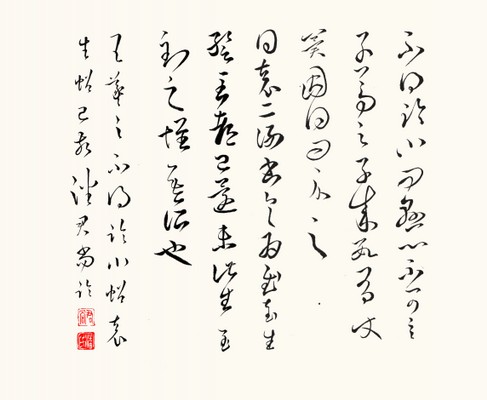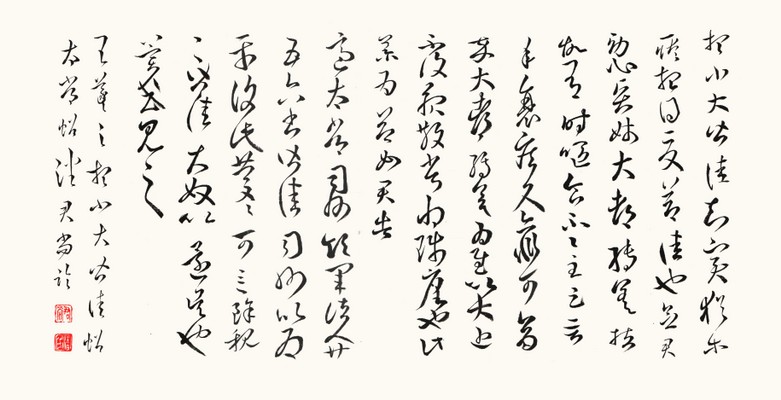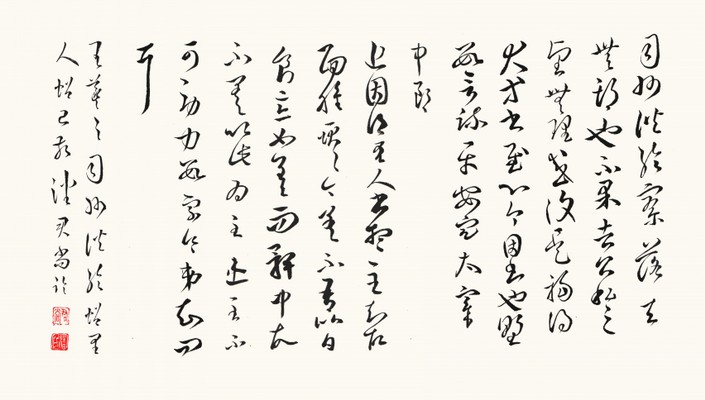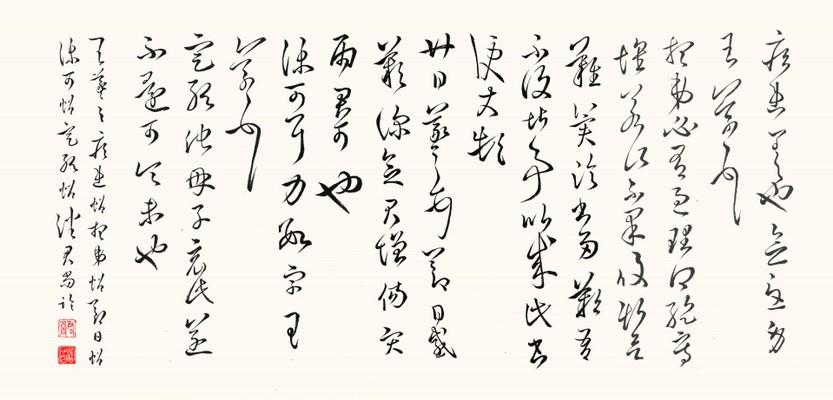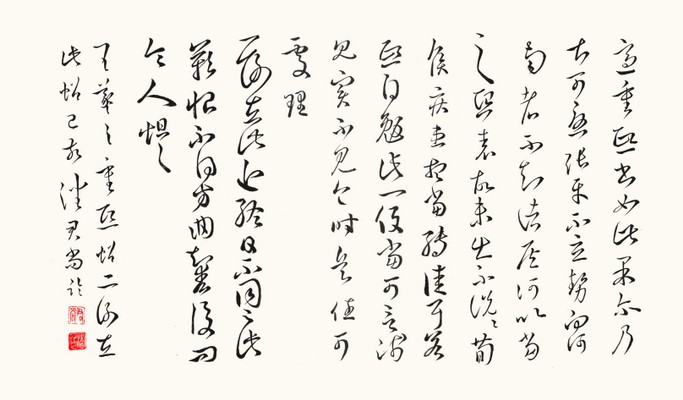Galleries and Translations > Models of Masterpieces > Models of miscellaneous Masterpieces by Wang Xizhi (part VI) 臨王羲之諸法帖 (第六部份)
Models of miscellaneous Exemplary Masterpieces by Wang Xizhi (part VI) 臨王羲之諸法帖 (第六部份)
Historical information
(I)
Wang Xizhi (王羲之) is often considered to be the most outstanding Chinese calligrapher of all time and is regarded as “The Sage of Calligraphy (書聖)” in China and Japan. Born in 303AD in an upper-class aristocratic family, Wang Xizhi started learning Chinese calligraphy at the age of seven from the renowned calligrapher Wei Shuo (衛鑠 or 衛夫人, 272-349AD). His father, Wang Kuang (王曠, ?-?AD), was a government prefecture chief (太守) and was also a calligrapher. His uncle, Wang Dao (王導, 276-339AD), was the prime minister (丞相) during the reign of Emperor Cheng of the Eastern Jin Dynasty (晉成帝, 321-342AD ). Further biographic information of Wang can be seen on my page regarding Lanting Xu (蘭亭帖).
(II)
The calligraphies presented below are my models of Wang Xizhi's handwriting found in Chunhua Imperial Archive of Calligraphy Exemplars (《淳化閣帖》). Supposedly, these handwritings were short letters and memos scribed by Wang. Although their authenticities are questionable, they are still often regarded as Exemplary Masterpieces (法帖) for calligraphers to study and observe. In the art of Chinese calligraphy, "帖(pronounced as Tie)" refers to an exemplary work that should be studied by all .
(III)
Since the originals in the Chunhua Imperial Archive of Calligraphy Exemplars (《淳化閣帖》) can be parts of or whole letters/memos scribed by Wang, translations that are provided below, if available, may not be entirely precise, for they can be interpreted out of context. Further, whether Wang had actually scribed them remains questionable. Accordingly, scholars should be wary of using these as authentic historical references.
A model of Bu De Lin Chuan Tie (不得臨川帖) and Yuan Sheng Tie (袁生帖)
35 X 37 cm
Click to Enlarge. Reserved, not available in shop.
Bu De Lin Chuan Tie (不得臨川帖):
Original Classical Chinese: 不得臨川問,懸心不可言。子嵩之子來,數有使冀。因得問,示之。
English: NA. The entire phrase may not be translated, for the context in which it was written is unknown or uncertain.
Yuan Sheng Tie (袁生帖):
Original Classical Chinese: 得袁、二謝書,具為慰。袁生暫至都,已還未?此生至到之懷,吾所也。
English: NA. The entire phrase may not be translated, for the context in which it was written is unknown or uncertain.
A model of Xiang Xiao Da Jie Jia Tie (想小大皆佳帖) and Tai Chang Tie (太常帖)
35 X 69 cm
Click to Enlarge. Reserved, not available in shop.
Xiang Xiao Da Jie Jia Tie (想小大皆佳帖):
Original Classical Chinese: 想小大皆佳。知賓猶爾。耿耿。想得夏節佳也。念君勞心。賢姊大都轉差。然故有時嘔食不已。至足言年衰疾久。亦非可倉卒。大都轉差為慰。以大近不復服散。常將陟釐也。此藥為益。如君告。
English: I hope everyone, old and young, is in good health. I know that Bin is still bedridden. I am concerned about him. I hope he will get better once it is summer. I am thinking of you, sir, with a weary heart. The virtuous elder sister [i.e., Wang Xizhi’s wife] is more or less recovered, although she still has periodic bouts of incessant vomiting. Being an illness of old age makes it even more unlikely that it will be [cured] soon. That she has taken a general turn for the better is a comfort to me. Because I have not been taking Cold-Food Powder [fu san] recently, I will take zhili [pills ?]. This medicine is beneficial, just as you, sir, advised. (Translated by Antje Richter & Charles Chace in The Trouble with Wang Xizhi: Illness and Healing in a Fourth-Century Chinese Correspondence (T’oung Pao 103-1-3 (2017) 33-93)).
Tai Chang Tie (太常帖):
Original Classical Chinese: 適太常、司州、鎮軍諸人廿五、六書,皆佳。 司州以為平復,此慶慶可言。 餘親親皆佳。 大奴以還吳也,冀或見之。
English: NA. The entire phrase may not be translated, for the context in which it was written is unknown or uncertain.
A model of Si Zhou Gong Ji Tie (司州供給帖) and Li Ren Tie (里人帖)
35 X 62 cm
Click to Enlarge. Reserved, not available in shop.
Si Zhou Gong Ji Tie (司州供給帖):
Original Classical Chinese: 司州供給寥落,去無期也。不果者,公私之望無理,或復是福。得大等書慰心,今因書也。野數言疏平安定。太宰中郎。
English: NA. The entire phrase may not be translated, for the context in which it was written is unknown or uncertain.
Li Ren Tie (里人帖):
Original Classical Chinese: 近因得里人書。想至知故面腫。今差不。吾比日食意如差。而骭中故不差。以此為至患。至不可勞力。數字令弟知聞耳。
English: Because I lately had a letter from someone in your neighborhood, I was wondering about the swelling of the face that you suffered from. Are you better now? Although my appetite has improved in the last days, my shins have not. I suffer intenselyfrom this and can hardly do anything involving physical exertion. Just a few words to let you know what’s going on. (Translated by Antje Richter & Charles Chace in The Trouble with Wang Xizhi: Illness and Healing in a Fourth-Century Chinese Correspondence (T’oung Pao 103-1-3 (2017) 33-93)).
A model of Ji Huan Tie (疾患帖), Xiang Di Tie (想弟帖), Jie Ri Tie (節日帖), Pu Ke Tie (僕可帖), and Ding Ting Tie (定聽帖)
35 X 71 cm
Click to Enlarge. Reserved, not available in shop.
Ji Huan Tie (疾患帖):
Original Classical Chinese: 疾患差也。念憂勞。王羲之頓首。
English: NA. The entire phrase may not be translated, for the context in which it was written is unknown or uncertain.
Xiang Di Tie (想弟帖):
Original Classical Chinese: 想弟必有過理,得蹔寫懷。若此不果,役期欲難冀。臨書多歎。吾不復堪事,比成此書,便大頓。
English: NA. The entire phrase may not be translated, for the context in which it was written is unknown or uncertain.
Jie Ri Tie (節日帖):
Original Classical Chinese: 廿日羲之頓首:節日感嘆,深念君,增傷。災雨,君可也?
English: NA. The entire phrase may not be translated, for the context in which it was written is unknown or uncertain.
Pu Ke Tie (僕可帖):
Original Classical Chinese: 僕可耳,力數字。羲之頓首。
English: NA. The entire phrase may not be translated, for the context in which it was written is unknown or uncertain.
Ding Ting Tie (定聽帖):
Original Classical Chinese: 定聽他母子哀此,遂不還。可令未也。
English: NA. The entire phrase may not be translated, for the context in which it was written is unknown or uncertain.
A model of Zhong Xi Tie (重熙帖) and Er Xie Zai Ci Tie (二謝在此帖)
35 X 62 cm
Click to Enlarge. Reserved, not available in shop.
Zhong Xi Tie (重熙帖):
Original Classical Chinese: 適重熙書如此,果爾乃堪可憂。張平不立勢向河南者,不知諸侯何以當之。熙表故未出,不說說荀侯疾患,想當轉佳耳。若熙得勉此一役,當可言。淺見實不見今時兵任可處理。
English: NA. The entire phrase may not be translated, for the context in which it was written is unknown or uncertain.
Er Xie Zai Ci Tie (二謝在此帖):
Original Classical Chinese: 二謝在此。近終日不同。同此歎恨不得。方回知爽後問。令人怛怛。
English: NA. The entire phrase may not be translated, for the context in which it was written is unknown or uncertain.
